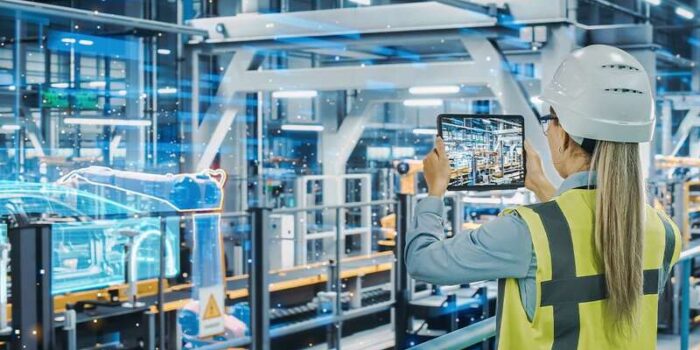Mergers and acquisitions (M&A) commonly require technology and a lot of reasonable level of effort by the buyer. As a business owner, you want to understand what your company is buying and the commitments you are expecting. Access to the correct information can also make or break a deal.
Buyers are using technology to transform how they lead a reasonable level of investment and also execute deals. When applied in the right circumstances, technology offers deal-making advantages and can potentially increase deal enhancement for either party. By dramatically changing how data is gathered and analyzed. The technology ensures your business has reliable and complete information for the transaction. It can cut costs, and increase the efficiency of the deal-making process. And identify potential problems that may overlook. Read below to learn what technology you should be incorporating into your M&A strategy.
Impact of Data Visualization
Businesses rely on data for their due diligence and often gather as much data as they can before a deal. Large amounts of data can be more overwhelming than helpful unless companies have a way of synthesizing the data quickly to discern results and outcomes.
Data visualization technology can take huge amounts of data from many sources and convert the information into easy-to-understand visualizations. It transforms numerical and textual data into charts, graphs, tables, maps, and other visual figures. Data visualization can be used during any part of the deal-making cycle, from the origination phase through due diligence to integration.
This software can visually compare companies based on the data and company criteria used during the origination phase. It also picks up trends that are not otherwise easily identifiable. Data visualizations can capture previously undetected downturns during specific periods or spikes in business activity during due diligence.
Data visualization software can also be leveraged during the integration phase. Feedback and data from employee satisfaction surveys can be transformed into suggestions for improvements, helping to identify potential weaknesses, so your business can address them before they become a significant problem.
Industry Exploration Information
Data visualization software can also be paired with other industry research sources like IBISWorld. Companies like IBISWorld provide research data on thousands of global industries, delivering a quick and intelligent overview of any industry. In every report, they provide actionable insights, comprehensive data, and in-depth analysis of industries around the globe.
With tools like this, M&A strategy professionals can View top liquidity, coverage, leverage, and operating ratios for improved interpretation of financial data, and
Obtain competitive analysis to improve a company’s business strategy and learn how to differentiate from the competition to attract a larger market.
Artificial Intelligence
Artificial intelligence (AI) combines data sets with computer science for problem-solving purposes. AI is to go through complex documents and contracts and pull out relevant information during the M&A process. AI can efficiently help businesses find important figures and context for their deals.
This technology is beneficial for the due diligence process, which usually relies on teams of employees reviewing papers for specific details for weeks or months. This can be a massive strain on resources and is still prone to human error.
AI allows companies to review documents faster and more accurately, pulling relevant data based on search parameters. This information may include the terms of contracts with both internal and external stakeholders or information about the lease obligations of a company.
AI helps companies answer common due diligence questions by gathering information on a range of potential risk areas. These include pending litigation, compliance issues, and dispute resolution. Using AI saves companies time and money and can help close deals faster.
Project Management Software
Despite the growing use of technology, M&A deals are still complex and require the management of numerous tasks simultaneously, especially during the due diligence phase. Project management software eases this burden by organizing tasks and helping businesses stay on track.
Project management software is to handle the complexity of multiple M&A deals at once. It organizes and manages information and tasks based on a company’s needs throughout the entire transaction.
Project management software has features for prospecting, completing due diligence, and managing transactions. It can create subprojects and determine the priority for each transaction instead of assembling all the tasks.
Project management software lets you stay on top of authorizations and necessary documentation and collect any required feedback. It can create individual requests and projects for different team members. Companies can gain more insight into each part of the due diligence process by visually seeing the tasks requiring completion, helping to manage the transaction more efficiently.
Using Drone Technology
Services clients within the construction, energy, manufacturing, and transportation-trade-maritime industries, which are front-runners in adapting the use of drone technology. Using drones allows potential buyers a bird’s eye view of the company’s operations and places with visitation restrictions. The COVID-19 pandemic was a significant factor contributing to the widespread adoption of drone technology because it was harder to travel and gain in-person access to buildings and companies during the M&A process.
While restrictions have eased, companies are finding it more time and cost-effective to continue using drones in place of visiting in person. Drones can also capture detailed visualizations of factory floors, industrial buildings, big-box retailers, and any number of properties that are not easy to get to.
Drone technology can also be paired with other digital live streaming and conferencing technology so team members in different locations can have a real-time tour of the site together. These remote tours help businesses reduce travel costs and also allow angles and details to be seen that an in-person visit would not capture.
Drones help businesses gather factual data for due diligence, including completing pre-acquisition flyovers of properties. Performing environmental site assessments over large acreage or multiple sites, and completing thermal inspections and topographical surveys. Also, in places that are difficult to inspect and provide reliable data for the transaction.
Valuation Frameworks
The Value Builder System also provides a methodology that delivers a statistically validated value of a business. Building a company’s value improves position when considering an M&A deal. And this tool offers companies an accurate picture of when an offer is good or not.
Valuation tools can also provide business owners with scenarios illustrating how the company can be run without them, empowering owners to want to create an even more valuable business. Which is easier to sell. The more valuable the business, also the more sought-after it becomes, making it more likely to receive unsolicited offers.





